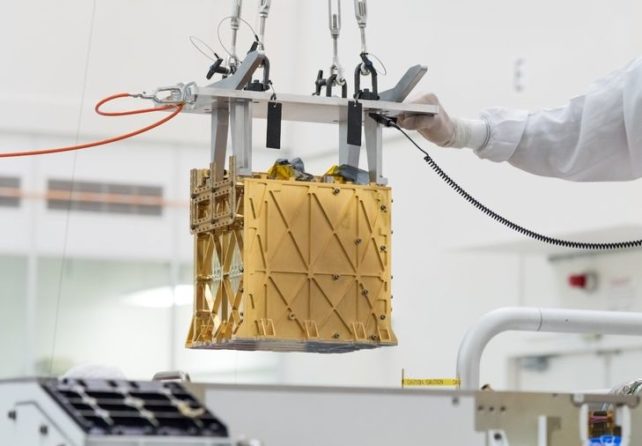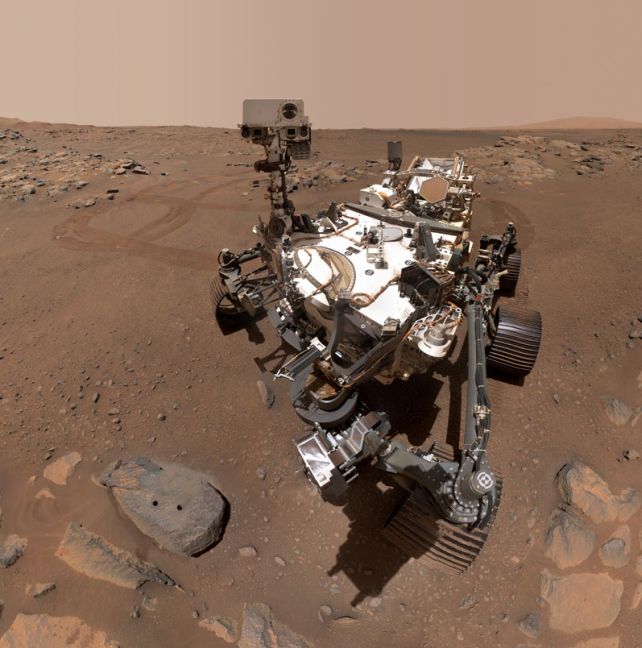An experiment that took place on Mars has shown that it's feasible to extract breathable oxygen from the thin Martian atmosphere.
From its little home in the belly of NASA's Perseverance rover, the briefcase-sized Mars Oxygen In-Situ Resource Utilization (ISRU) Experiment (MOXIE) has been repeatedly breaking apart molecules in Mars air to generate a small, but steady supply of oxygen.
Now, MOXIE is getting set to retire, after a job well done.
"MOXIE's impressive performance shows that it is feasible to extract oxygen from Mars' atmosphere – oxygen that could help supply breathable air or rocket propellant to future astronauts," says NASA Deputy Administrator Pam Melroy.
"Developing technologies that let us use resources on the Moon and Mars is critical to build a long-term lunar presence, create a robust lunar economy, and allow us to support an initial human exploration campaign to Mars."

The MOXIE experiment, designed by MIT scientists, has been running since Perseverance landed on Mars in February 2021. Not continuously; operators here on Earth sent commands to MOXIE to see how it runs over time under different Martian conditions.
Since then, over 16 runs, MOXIE has produced a total 122 grams of oxygen. That, NASA says, is about enough to keep a small dog breathing for 10 hours – or a human for 4 hours.
It works by electrolysis, using a current to drive an electrochemical breakdown of carbon dioxide into its constituent atoms. MOXIE draws in Martian air through a filter that scrubs it clean. This purified Mars air is then compressed, heated, and sent through the Solid OXide Electrolyzer (SOXE). The electrolyzer splits the carbon dioxide into carbon monoxide and oxygen ions.
The carbon monoxide is vented, but the oxygen atoms are recombined into O2, or molecular oxygen; the kind we need to survive. This gas is then measured for quantity and purity before being vented back out again.
Each run takes a few hours. Following several hours of warming up, MOXIE gathers oxygen for 1 hour per experiment followed by a period of powering down. In this hour of operation, MOXIE is designed to produce up to 10 grams – about 20 minutes worth of breathable oxygen for one astronaut.
That's on paper, at least. How much it actually managed to produce varied; on its sixteenth run, on 7 August, MOXIE extracted about 9.8 grams of breathable oxygen, which was pretty close to its goal. This shows that, as thin and tenuous as the Martian atmosphere is, it can yield a supply of oxygen.

Even in the worst case, a device such as MOXIE would be able to supplement other supplies of oxygen, reducing the amount of cargo needed to be ferried from Earth.
But with what they have learnt from MOXIE, researchers under physicist and MOXIE principal investigator Michael Hecht of MIT believe they can develop a full-scale system including a new-and-improved version of the oxygen-extracting device, a means to liquefy that gas, and a way to store the liquid.
Future Martian explorers are going to need all the help they can get in being self-sufficient. Between the breathing requirements of a team of astronauts living on Mars for a year, and the liquid propellant needed to power a spacecraft, some 500 metric tons of oxygen are going to be needed.
It's going to have to wait, though. There are many problems that need to be tested and solved before humans attempt a long stay on the red planet. Oxygen is just one of them.
"We have to make decisions about which things need to be validated on Mars," Hecht says. "I think there are many technologies on that list; I'm very pleased MOXIE was first."
A paper on MOXIE's first 7 runs was published in Science Advances last year.
